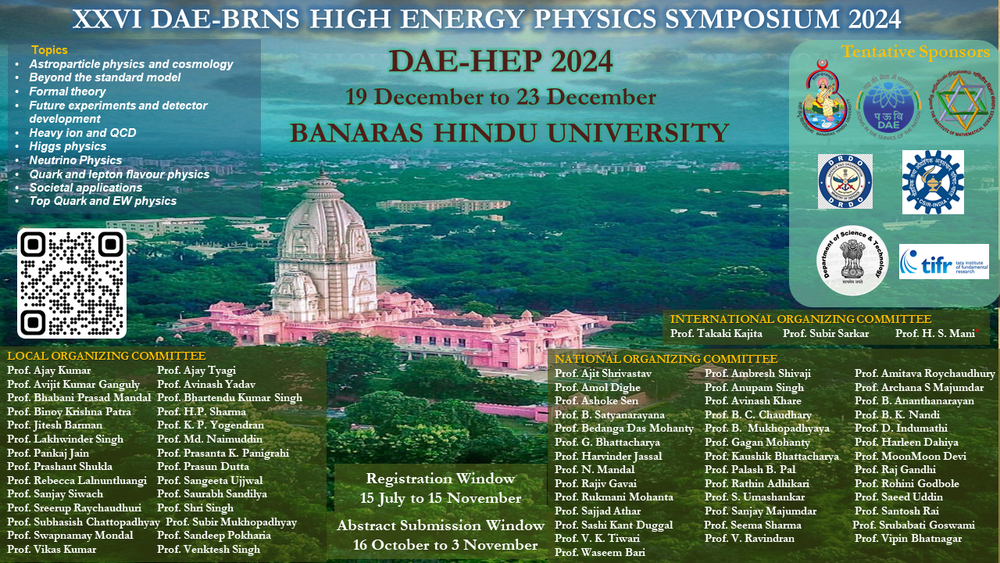Speaker
Description
We conduct an analysis of electromagnetic and semileptonic decay modes of $B_c$ mesons using a QCD-inspired phenomenological model. In light of recent observations of anomalies in LHC involving the $\mathcal{R}$-Ratios, $\tau$-polarization $(\mathcal{P}{\tau})$, and forward-backward asymmetry $(\mathcal{A}_{FB})$ — which are particularly sensitive to New Physics, we investigate observables for the decay channels: $B_c \to \eta_c (J/\psi) \tau \nu_{\tau}$ and $B_c \to D (D^*) \tau \nu_{\tau}$ within a potential model framework. We also study the radiative channel: $B_c^* \to B_c \gamma$ where we considered a typical case of $B_c^* (1S) \to B_c (1S) \gamma$, our predicted decay width is found quite sensitive to the mass difference between $B_c^*$ and $B_c$ mesons which may help in determining the mass of $B_c^*$ experimentally. Additionally, we calculate the vector, pseudoscalar and electromagnetic form factors, examining their $q^2$ dependence for these transitions in both ground and radially excited states. Given the fluctuating appearance and disappearance of flavor anomalies in the Run 3 data collection period, this study seeks to identify different measurement tools, capable of probing the limited regions of theoretical parameter space
| Field of contribution | Phenomenology |
|---|

